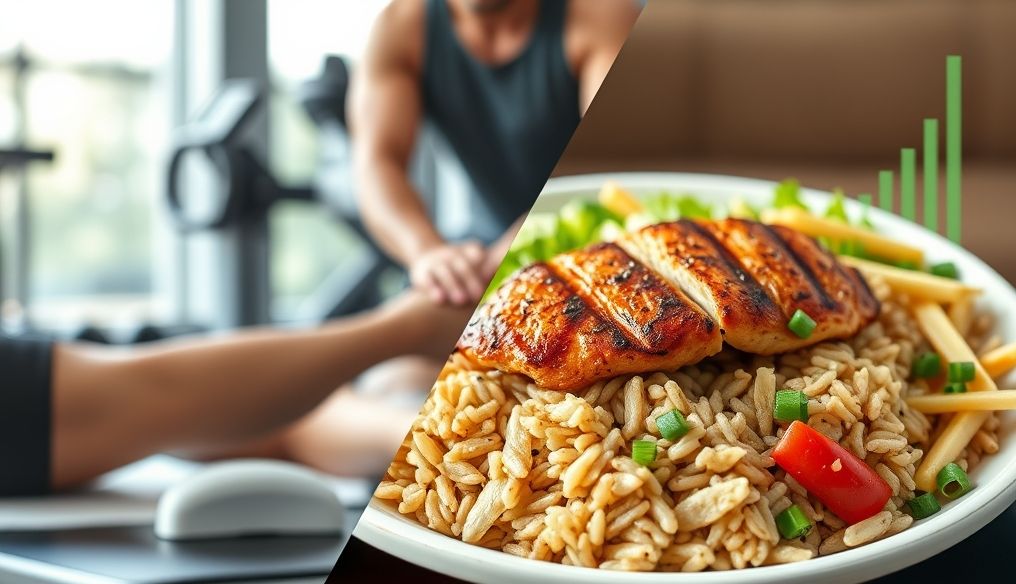How Can I Maintain a Healthy and Ideal Weight After 40?
As we age, maintaining a healthy and ideal weight becomes a challenge for many. Hormonal changes, a slower metabolism, and lifestyle changes all contribute to weight gain and difficulty losing it. However, following healthy and well-thought-out strategies can help you achieve your goal and maintain a healthy and ideal weight after 40.
Chapter 1: Understanding Body Changes After 40
After the age of 40, physiological changes occur that affect body weight. Among the most important of these changes are:
- Slower Metabolism: The basal metabolic rate (BMR) gradually decreases, meaning the body burns fewer calories at rest.
- Loss of Muscle Mass: With age, the body tends to lose muscle mass, reducing its ability to burn calories.
- Hormonal Changes: In women, menopause leads to a decrease in estrogen levels, which increases fat accumulation in the abdominal area. In men, testosterone levels decrease, affecting muscle mass and metabolism.
- Lifestyle Changes: Lifestyle may become more sedentary and less physically active, contributing to weight gain.
Understanding these changes helps you develop an effective plan to overcome them.
Chapter 2: Healthy and Balanced Nutrition
Nutrition is the foundation of maintaining a healthy weight. Here are some tips to improve your diet:
1. Focus on Whole, Unprocessed Foods
Whole foods like vegetables, fruits, whole grains, and lean proteins provide the essential nutrients the body needs and help you feel full for longer.
2. Control Portion Sizes
Eating moderate amounts of food helps avoid consuming excess calories. Use smaller plates and measure food portions.
3. Increase Protein Intake
Protein helps build and maintain muscle and increases satiety. Good sources of protein include chicken, fish, legumes, and eggs.
4. Limit Added Sugars and Saturated Fats
Foods high in added sugars and saturated fats increase the risk of heart disease and diabetes and contribute to weight gain. Avoid sugary drinks, sweets, and fried foods.
5. Drink Enough Water
Water helps you feel full and improves metabolism. Drink at least 8 glasses of water daily.
Chapter 3: The Importance of Regular Physical Activity
Regular physical activity is essential for maintaining a healthy weight and building muscle. Here are some tips:
1. Practice Aerobic Exercises
Aerobic exercises like walking, running, swimming, and cycling help burn calories and improve cardiovascular health. Try to do aerobic exercises for at least 150 minutes per week.
2. Strength Training
Strength training exercises like weight lifting, using free weights, and bodyweight exercises help build and maintain muscle, which increases the basal metabolic rate. Do strength training at least twice a week.
3. Increase Daily Activity
Try to increase your daily activity by walking instead of driving, using the stairs instead of the elevator, and participating in activities you enjoy.
Chapter 4: Adequate Sleep and Stress Management
Adequate sleep and stress management play an important role in maintaining a healthy weight:
1. Get Enough Sleep
Lack of sleep affects the hormones that regulate appetite, increasing the desire to eat high-calorie foods. Try to get 7-8 hours of sleep each night.
2. Manage Stress
Chronic stress increases the secretion of cortisol, which increases fat accumulation in the abdominal area. Practice relaxation techniques such as yoga, meditation, and deep breathing.
Chapter 5: Track Progress and Adjust the Plan
It is important to track your progress and adjust your plan as needed. Use food diaries to record what you eat, and measure your weight and waist circumference regularly. If you are not achieving the desired results, adjust your diet and exercise routine.
Chapter 6: Consult a Nutritionist
Consulting a nutritionist can help you develop a personalized diet plan that suits your needs and goals. A nutritionist can provide you with the advice and support needed to achieve a healthy and ideal weight.
Chapter 7: Healthy and Delicious Recipes
Here are some healthy and delicious recipes you can include in your diet:
1. Quinoa Salad with Vegetables
Ingredients: 1 cup cooked quinoa, mixed vegetables (cucumber, tomato, pepper), olive oil, lemon juice, salt, and pepper.
Instructions: Mix the ingredients and serve as a lunch or dinner.
2. Grilled Salmon with Vegetables
Ingredients: A piece of salmon, mixed vegetables (broccoli, carrots, zucchini), olive oil, herbs, salt, and pepper.
Instructions: Season the salmon and vegetables and bake in the oven until cooked.
Chapter 8: Changing Negative Habits
Eliminating negative habits is an essential part of maintaining a healthy weight. Avoid eating in front of the TV, eat regular meals, and avoid skipping breakfast.
Chapter 9: Staying Motivated
Staying motivated is key to success. Set realistic goals, reward yourself for progress, and seek support from friends and family.
Chapter 10: Dietary Supplements
Dietary supplements may be helpful in some cases, but you should consult a doctor before taking any supplement. Some supplements that may help with weight loss include fiber, chromium, and green tea.
By following these tips and strategies, you can maintain a healthy and ideal weight after 40 and enjoy good health and an active life.




